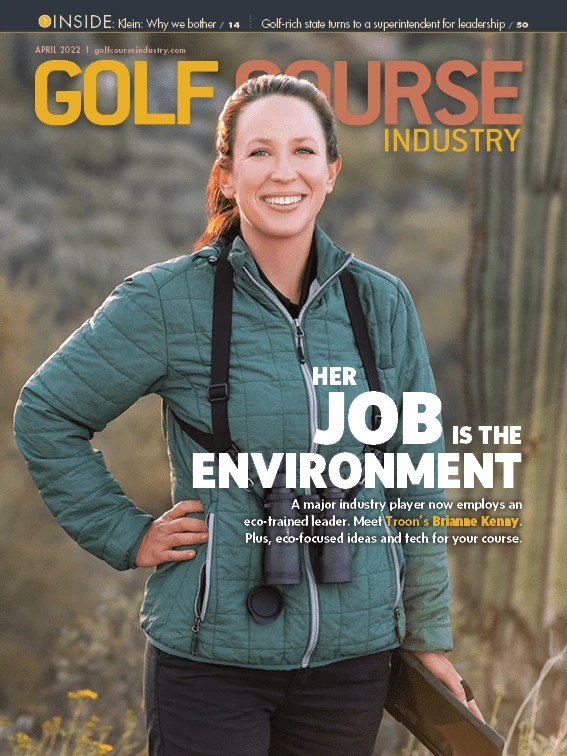
If necessity is the mother of invention, you would have to say that golf is responding very well to a host of changes necessitated by the novel coronavirus pandemic. Rounds played have escalated significantly, golf participation continues to increase and golf’s popularity as a spectator sport grows unabated. It may be, though, that one of the greatest benefits for golf has been newfound imaginative and engaging practices that are making golf more accessible and fun to play. Three significant changes seem to be emerging, according to those at the leading edge of envisioning the future of the game and its best path forward.
Evolving care and upkeep
The increased play that most courses are enjoying comes with a cost — additional wear and tear on courses, starting with teeing areas. “More tee flexibility is a must,” says Forrest Richardson, the immediate past president of the American Society of Golf Course Architects. Not only does varying teeing positions protect turf, but it also makes the game more enjoyable for players of different skill levels. “When you have more people playing any given course, you have more diversity on the property. That means we need better yardage flexibility, so players are having fun and not being forced to play from a certain distance.”
Another forward-thinking golf course designer, Tripp Davis, points to labor — its scarcity and training — as the focal point for evolving best practices. “We have to be aware of the time required to take care of the areas that can be in poor shape if not well taken care of, especially those that are important to the golfers’ perspective of a well-maintained course,” Davis says. “The design of tees, fairways, greens and bunkers that allows for good playing conditions with less (labor) input to these areas will be valued as play continues to build.”
Richardson adds, “Irrigation cycles have always been too long. Today, with more play, we’re faced with needing the course earlier and play continues later. We’re seeing system upgrades to accommodate these new hours of operation.”
Alternative facilities
Golf utilization is morphing to enable newcomers to the game and those aging on the course more options. With more people now working from home and with more flexible schedules, there has been an increase in the importance of adequate practice facilities, the quality of which, Davis says, “will be more important so beginners can learn the game. “I think we’ll see the trend of building facilities that require less time from the golfer and emphasize more fun continue to gain momentum. Formats where we may not have 18 holes, traditional sequences or what we currently think of as courses.”
Different ways to play
Golf and the way it’s played continues to evolve. “One equation that deserves our attention is the very simple matter of getting more people around a single golf course,” Richardson says. “This is not something the golf industry often thinks about because we have an entire group who operate highly exclusive, limited-play courses where more play is just not the goal.”
Short courses, short-game training facilities and putting courses use smaller land parcels compared to the traditional 18-hole course while accommodating both serious players and those more motivated by golf’s attributes for a good walk and casual socialization. “It’s a reality for golf, and one that speaks to sustainability, more goodwill and, ultimately, a better way to utilize land,” Richardson says.
Although change is often an uncomfortable trend for golf, the adjustments we’re seeing in the game and in the care for the places where it’s played is a healthy and welcomed adjustment to standard operating procedure. And if some of these changes have been ushered in — or forced upon us — by a devastating pandemic, that’s at least a sliver of a silver lining.

Explore the April 2022 Issue
Check out more from this issue and find your next story to read.
Latest from Golf Course Industry
- Editor’s notebook: Green Start Academy 2024
- USGA focuses on inclusion, sustainability in 2024
- Greens with Envy 65: Carolina on our mind
- Five Iron Golf expands into Minnesota
- Global sports group 54 invests in Turfgrass
- Hawaii's Mauna Kea Golf Course announces reopening
- Georgia GCSA honors superintendent of the year
- Reel Turf Techs: Alex Tessman





